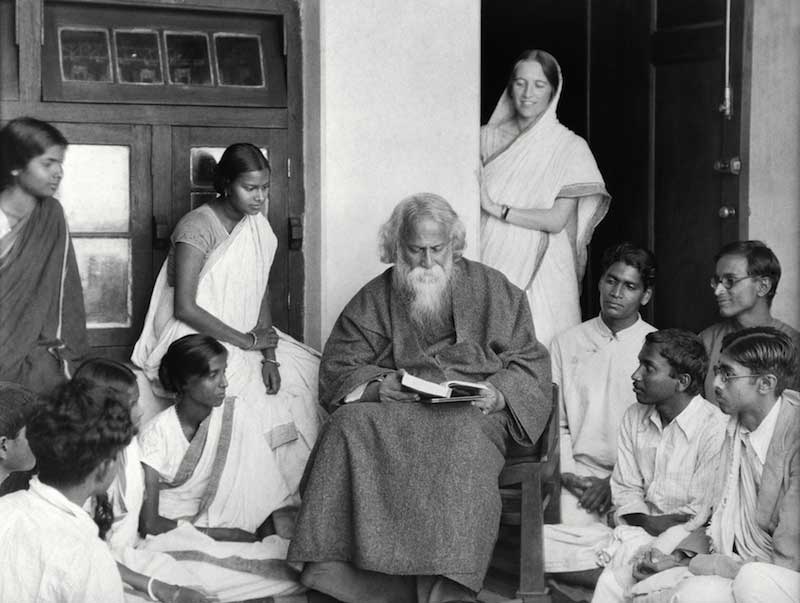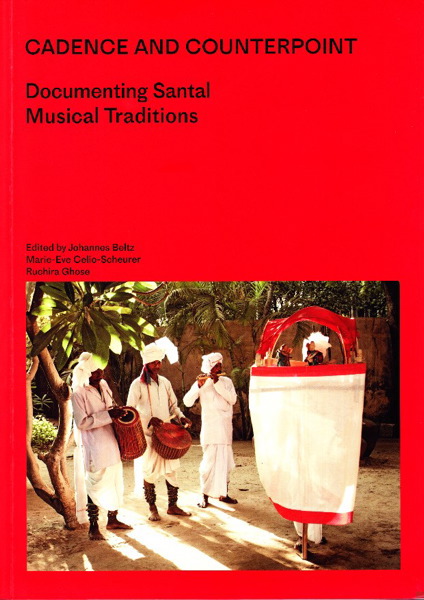
Photo © Rosemary Marandi/Al Jazeera >>
Boro Baski was the first in his village to receive a formal education and now he is making sure that others do too. | To read the full story with more photos, click here >>
[…] “Everyone wants to learn but the problem is atmosphere, the medium of teaching and the method of teaching, besides the facts of economics. It is the reason why tribal children find it difficult to integrate with the mainstream.”
Another factor is the cost of schooling. According to a 2015 report by the Indian Ministry of Human Resource Development, the annual secondary school drop-out rate among Indigenous children in India is just above 40 percent compared with the national average of about 25 percent. The ministry lists “economic” issues as the biggest reason for the dropouts – families just cannot afford to keep their children in school. […]
“Our idea of development is based on a very old idea taken up by many great minds such as Mahatma Gandhi and [the poet] Rabindranath Tagore,” Baski explains. “It is about development from within. Development through the strength of the community’s own.”
In 1996, the NGO went one step further, opening a day school – the Rolf Schoemb Vidyashram (RSV) – close to the villages of Bishnubati and Ghosaldanga (Vidyashram means the “house of learning”).
The school, which offers free education, also provides hot meals to encourage poor parents to send their children. Its ethos is one of community, with programmes devised and implemented by members of the community rather than by outsiders who might not be familiar with the strengths of and issues faced by local people. […]
Baski, who holds a doctorate in education and a master’s in social work from Viswa Bharati University, says he is happy being an educator. He has become a strong voice of the community not just in India but elsewhere, writing articles and books, and representing his community at conferences.
He is also dedicated to preserving Santhal cultural heritage.
In 2007, GASS built a small museum in Bishnubati to preserve some 100 artefacts, including weapons, musical instruments, photographs and medicinal herbs, that represent the community. Most of the artefacts were donated by tribal elders from across the states of West Bengal, Jharkhand and Odisha. They include silver jewellery once owned by Baski’s mother.
“The idea is to tell the world that we are not just happy-go-lucky people, as perpetuated by the mainstream media,” he says. “We have held expertise in hunting and fishing tools, in sophisticated music and medicines, for generations. It is just that this expertise was never spoken about.” […]
“What I do yearn for is for our children to be proud of their cultural heritage and preserve the traditions we hold so close.”
As if to demonstrate, as the sun begins to set, Baski takes his flute from his office drawer and plays a traditional tune.
Source: “The Indian school where Indigenous children are ‘never outsiders” by Rosemary Marandi (Aljazeera.com Education, 10 February 2020)
URL: https://www.aljazeera.com/indepth/features/indian-school-indigenous-children-outsiders-200128131128144.html
Date visited: 18 July 2020
[Bold typeface added above for emphasis]

Learn more
Audio | Santali Traditional and Fusion Songs: Ghosaldanga Bishnubati Adibasi Trust
eBook | Free catalogue: Banam: One of the ancient musical instruments of the Santals
eBook | Free catalogue: Museum of Santal Culture (Bishnubati) – West Bengal
Museum of Santal Culture Bishnubati
Santal | Santal Parganas | The Santals by Boro Baski | Santal music
Santal democratic organisations, customs, history and creation traditions (book tip)
Santali language | eBook | A Santali-English dictionary – Archive.org
Santal mission | Santal Parganas
Santali translations of Rabindranath Tagore’s “Vidyasagar-Charit” and “Raktakarabi”
Teaching Santal children by Boro Baski
Traditional music instruments of the Santals at the Museum of Santal Culture
Video | Roots and Branches: The Lifeworld of an Enlightened Villager in West Bengal
Video | Santali video album “Ale Ato” (Our Village, Part 1 of 2) – West Bengal
To locate the Museum of Santal Culture in Bishnubati village (near Santiniketan) on the map seen below, open by clicking on the left button:
Tips for using interactive maps
Toggle to normal view (from reader view) should the interactive map not be displayed by your tablet, smartphone or pc browser
For details and hyperlinks click on the rectangular button (left on the map’s header)
Scroll and click on one of the markers for information of special interest
Explore India’s tribal cultural heritage with the help of another interactive map >>
